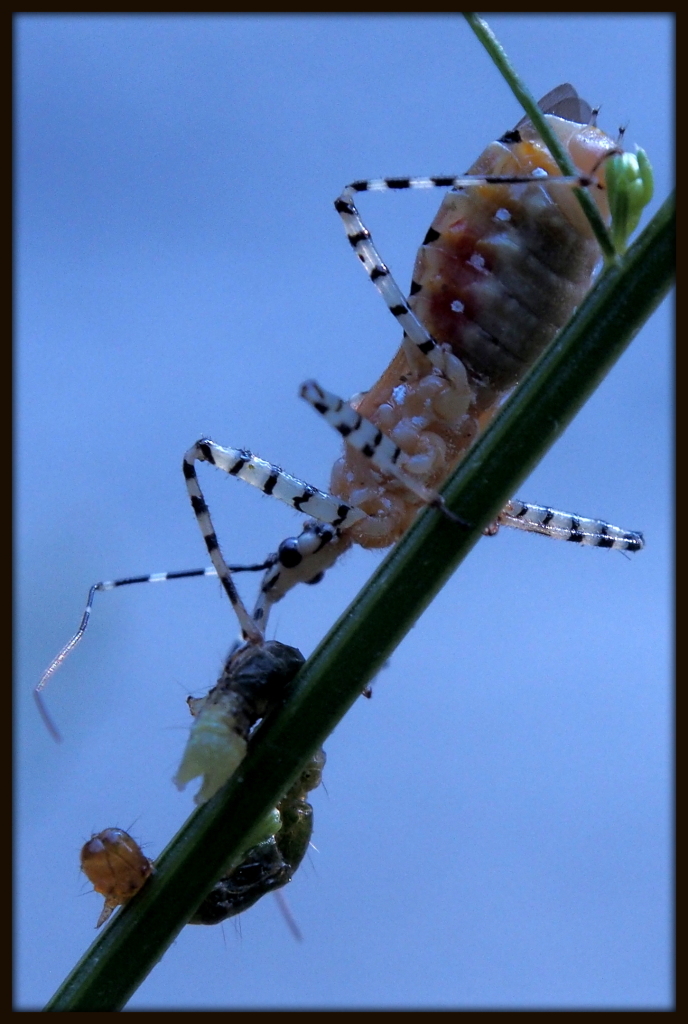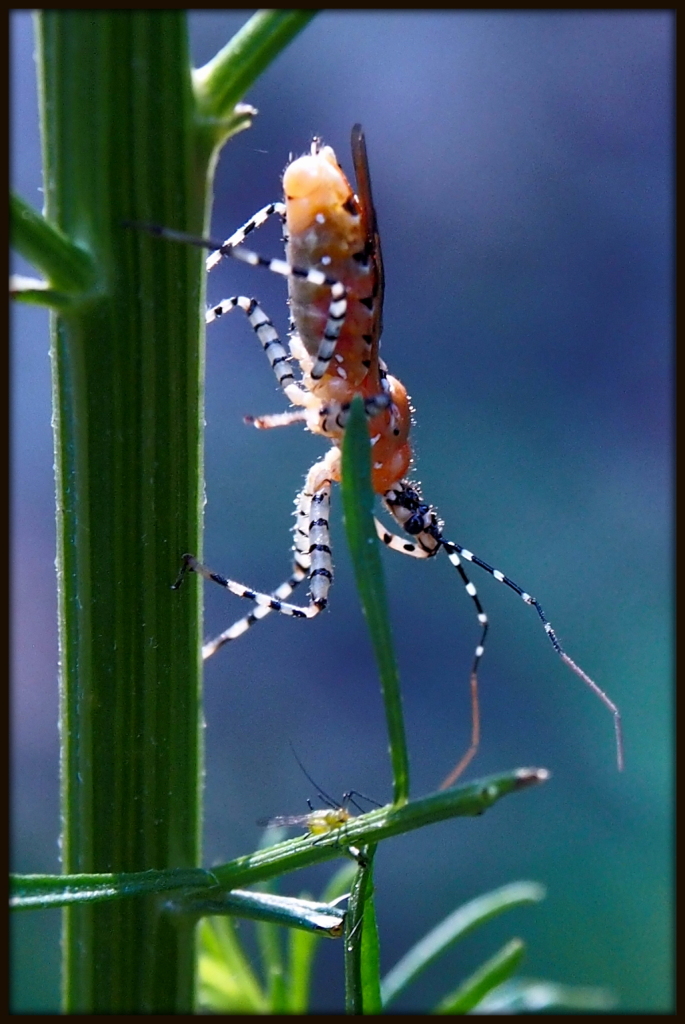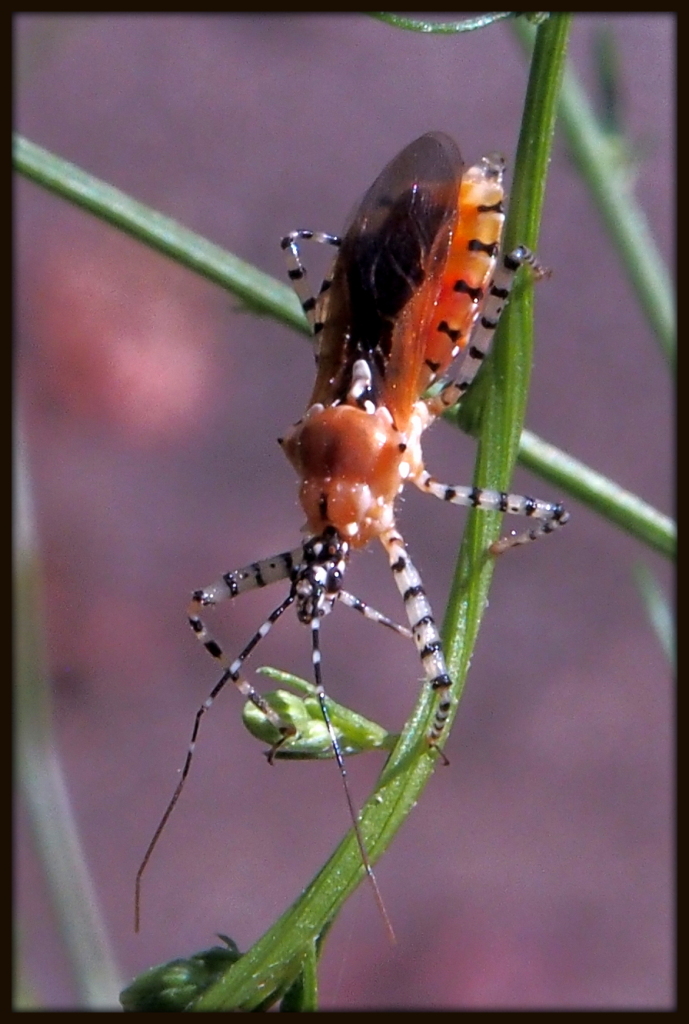Here are a few almost surreal images from a brief foggy morning walk down Piney Woods Church Road, before a frenzied day got underway.
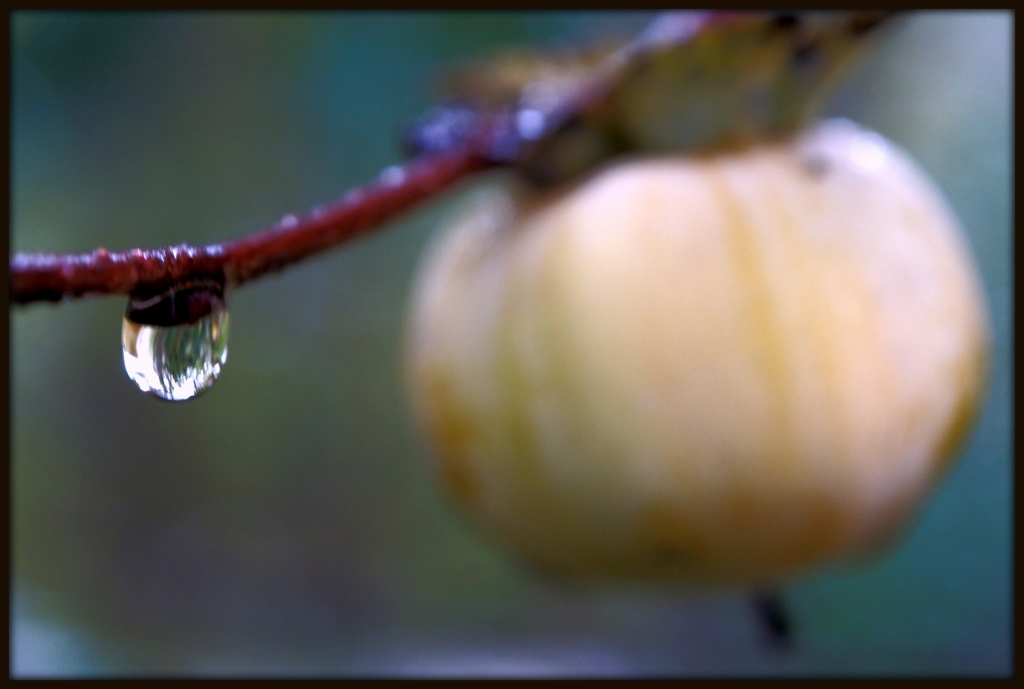
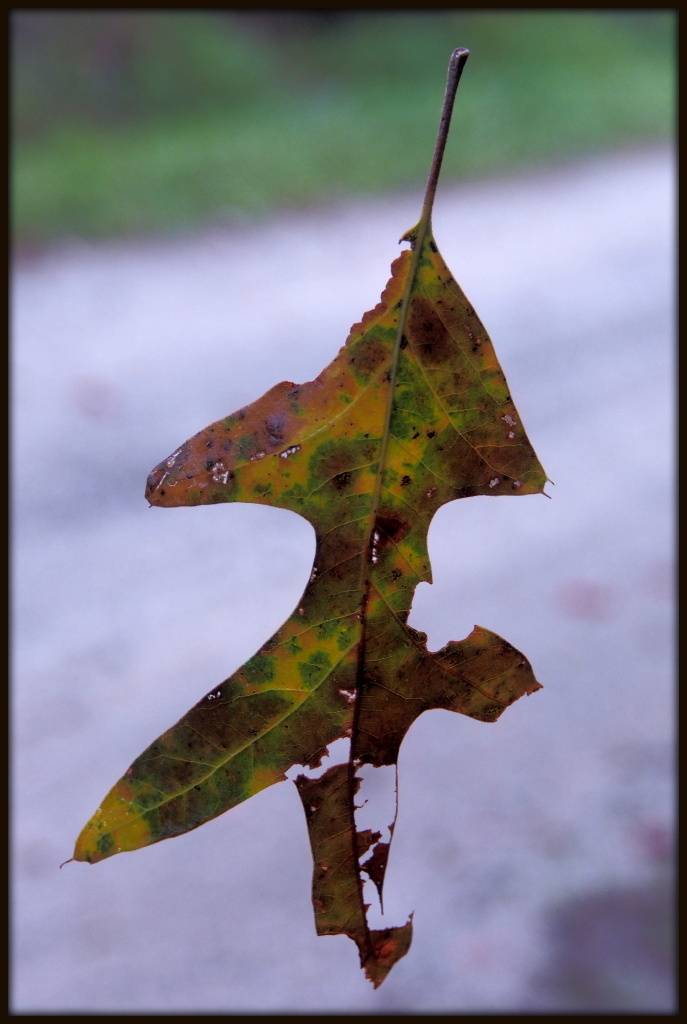
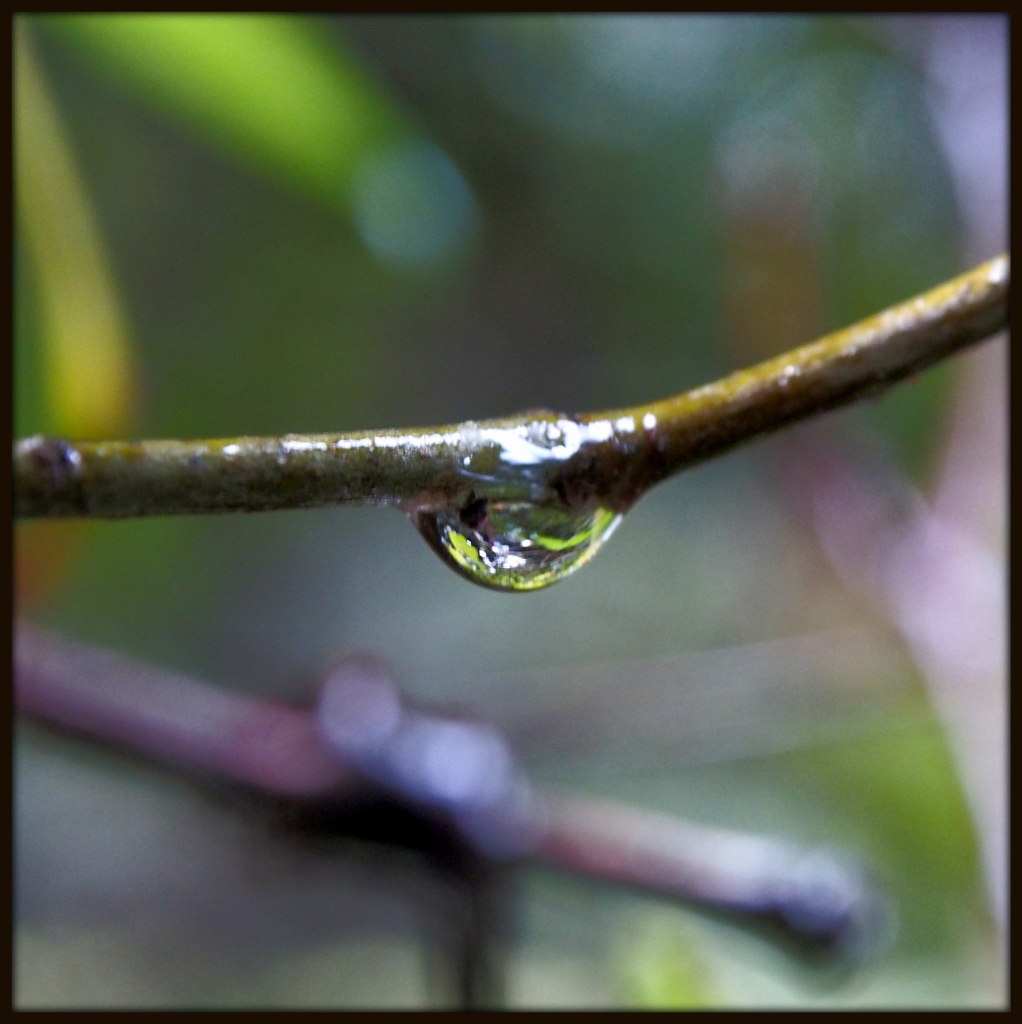

Here are a few almost surreal images from a brief foggy morning walk down Piney Woods Church Road, before a frenzied day got underway.




It as a gray and somber evening after a long day, much of it involving a home water leak and its aftermath. The sky was dark but somehow could not manage more than a few anemic drops of water falling onto the powdery sand and gravel of Piney Woods Church Road. I found a cute little jumping spider, but all my efforts at photographs yielded nothing in sharp focus. An afterthought photo of some yellow-brown leaves lying on the road bed will have to do.
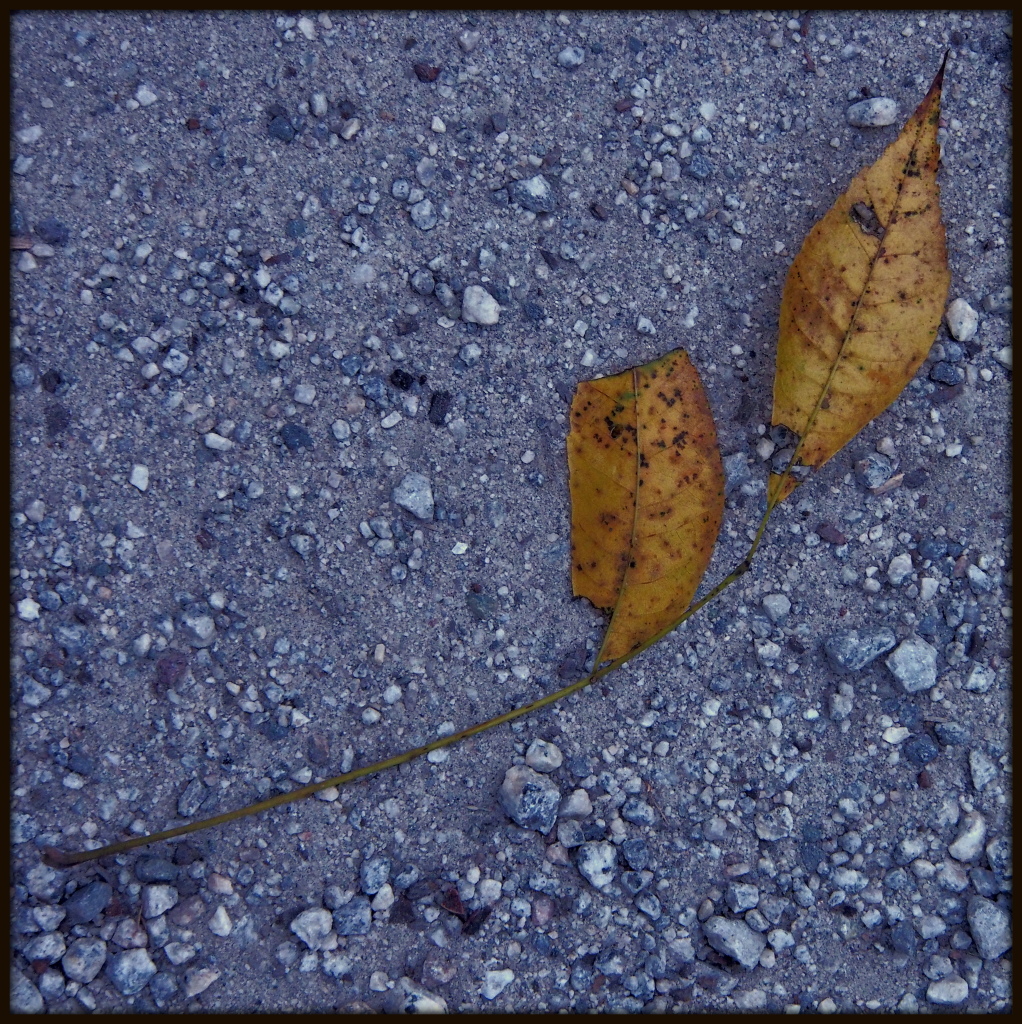
On my Piney Woods Church Road walk early this afternoon, I encountered a large ant, perhaps half an inch in length, on a blossom of American burnweed (Erechtites hieracifolia). So far this year, I have mostly avoided ants on my daily encounters, partly because most of the ones I see are tiny and very difficult to photograph, and partly because the word “ants’ here in Georgia tends to trigger images of fire ants and their vicious bites. This ant was quite placid, allowing me to take quite a few photographs. Its black head and amber body are distinctive enough that I was even able to make a tentative identification: Camponotus americanus, a species of Carpenter Ant native to the Southeast.
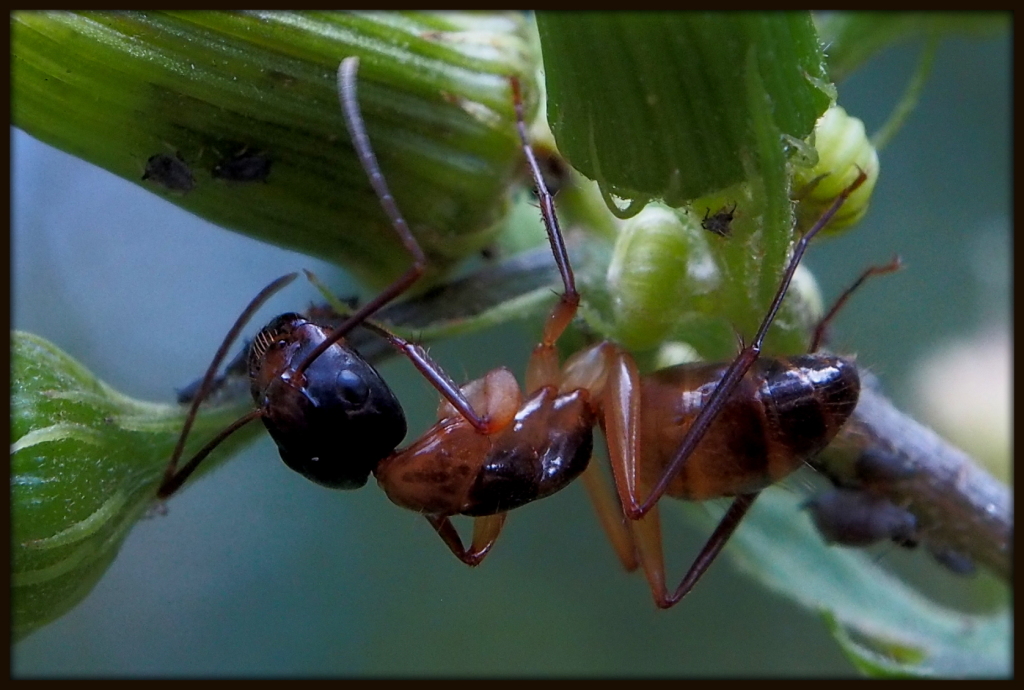

Three images as sunset approaches, taken among the grasses along the edge of Piney Woods Church Road. When I cease to encounter the unusual on my walk, I simply turn my attention back to the familiar and I find new wonders there.
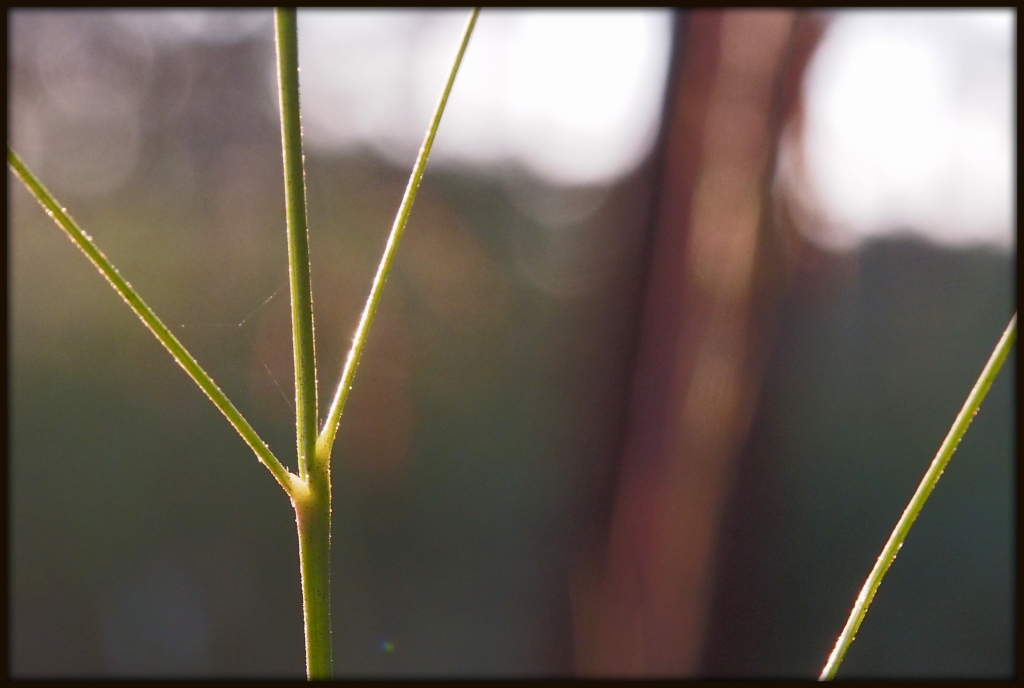
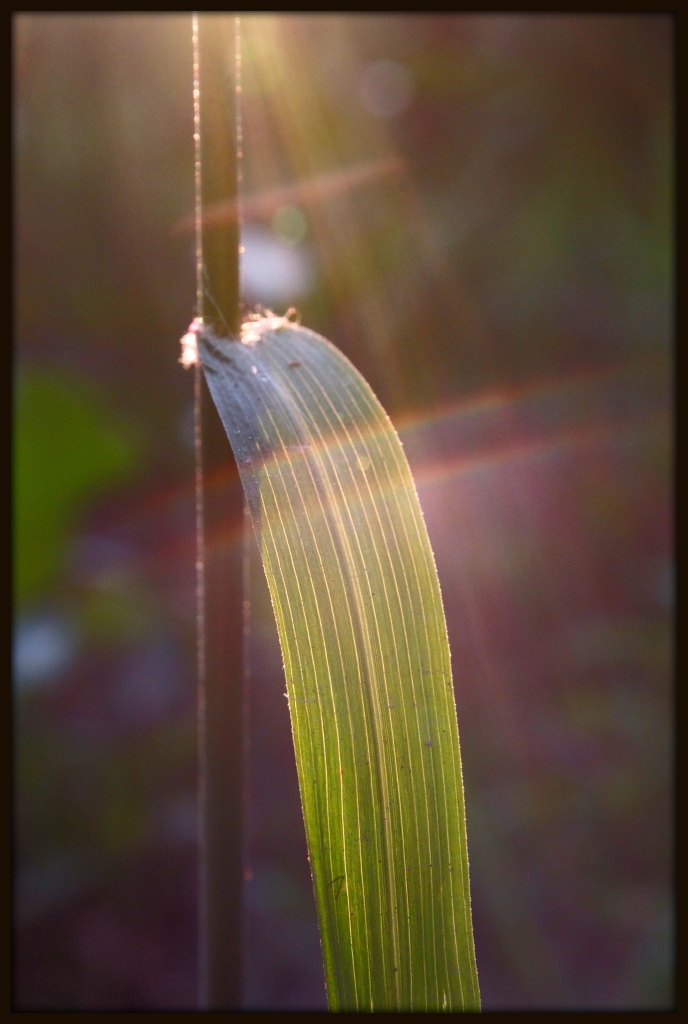
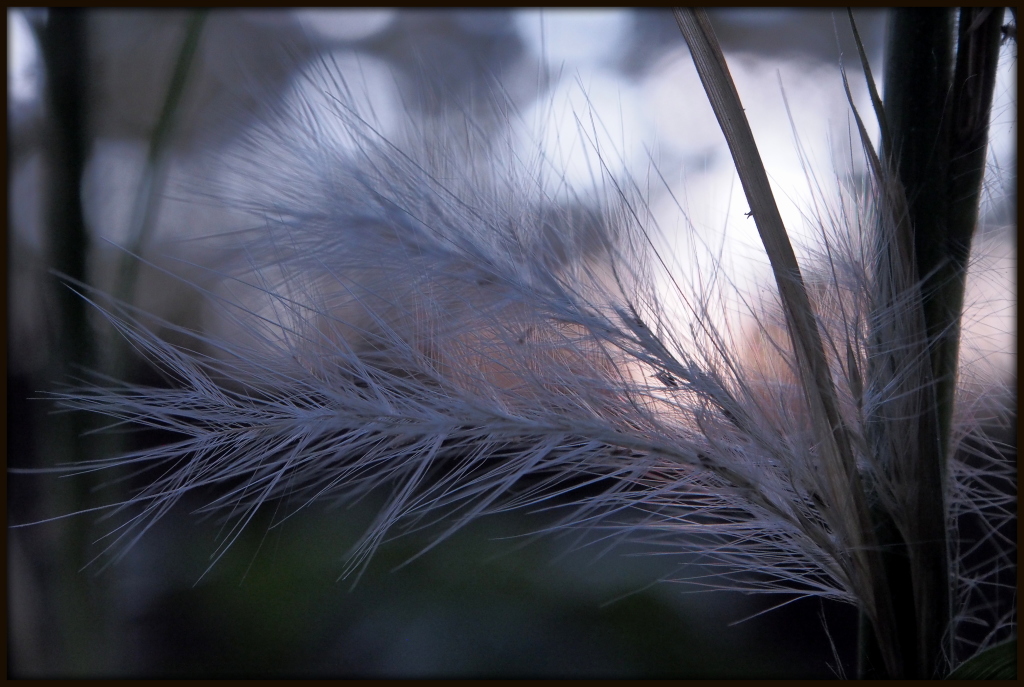
Awaiting rain on another hot and dry late afternoon (rain that avoided us completely, falling heavily on Atlanta’s downtown instead), I wandered down Piney Woods Church Road in search of new discoveries. Today, I encountered an unfamiliar yellow and black spider, about a centimeter across, with two spiny projections on the end of her abdomen. I intently watched her spinning a web for several minutes. Later, consulting my Spiders of the Carolinas text, I discovered that she was an Arrowshaped Micrathena (Micrathena sagittata), a striking orbweaver that is relatively uncommon in North and South Carolina (though I am not certain about Georgia).
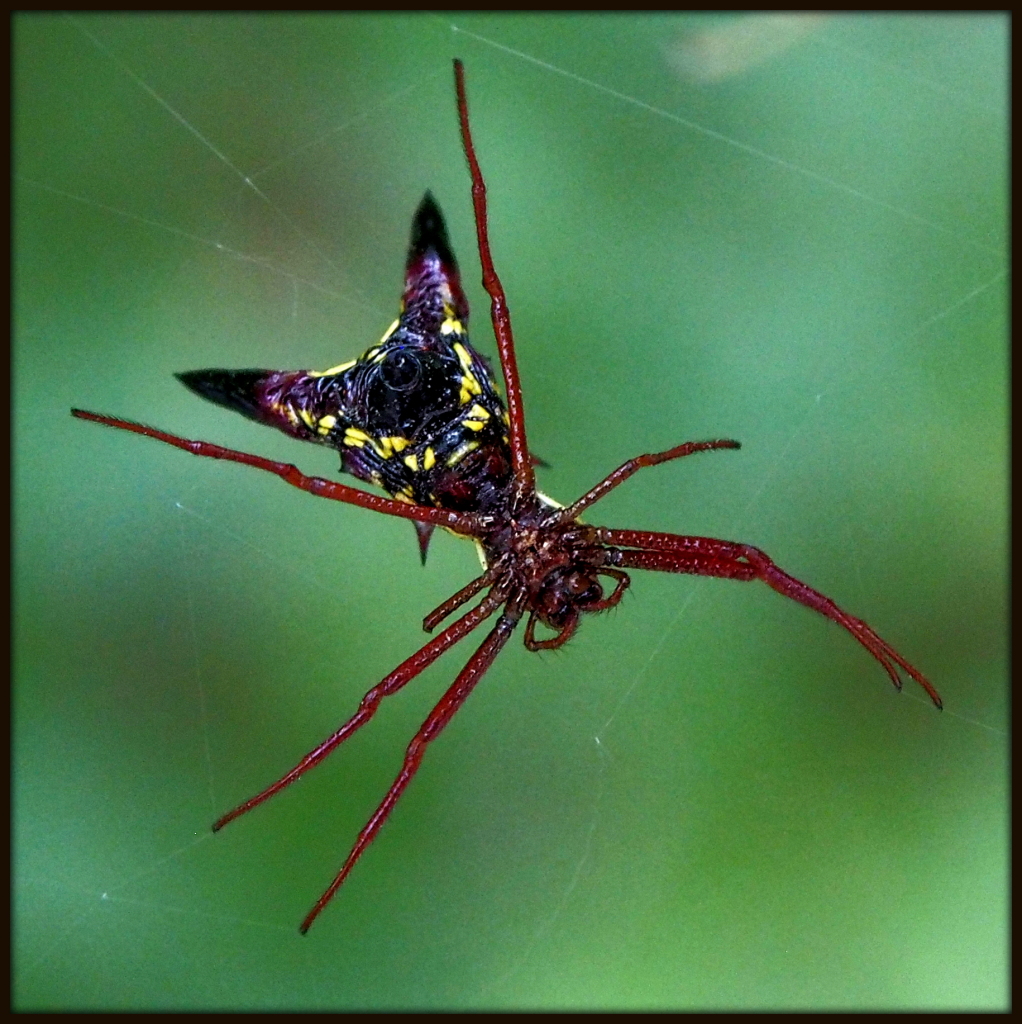
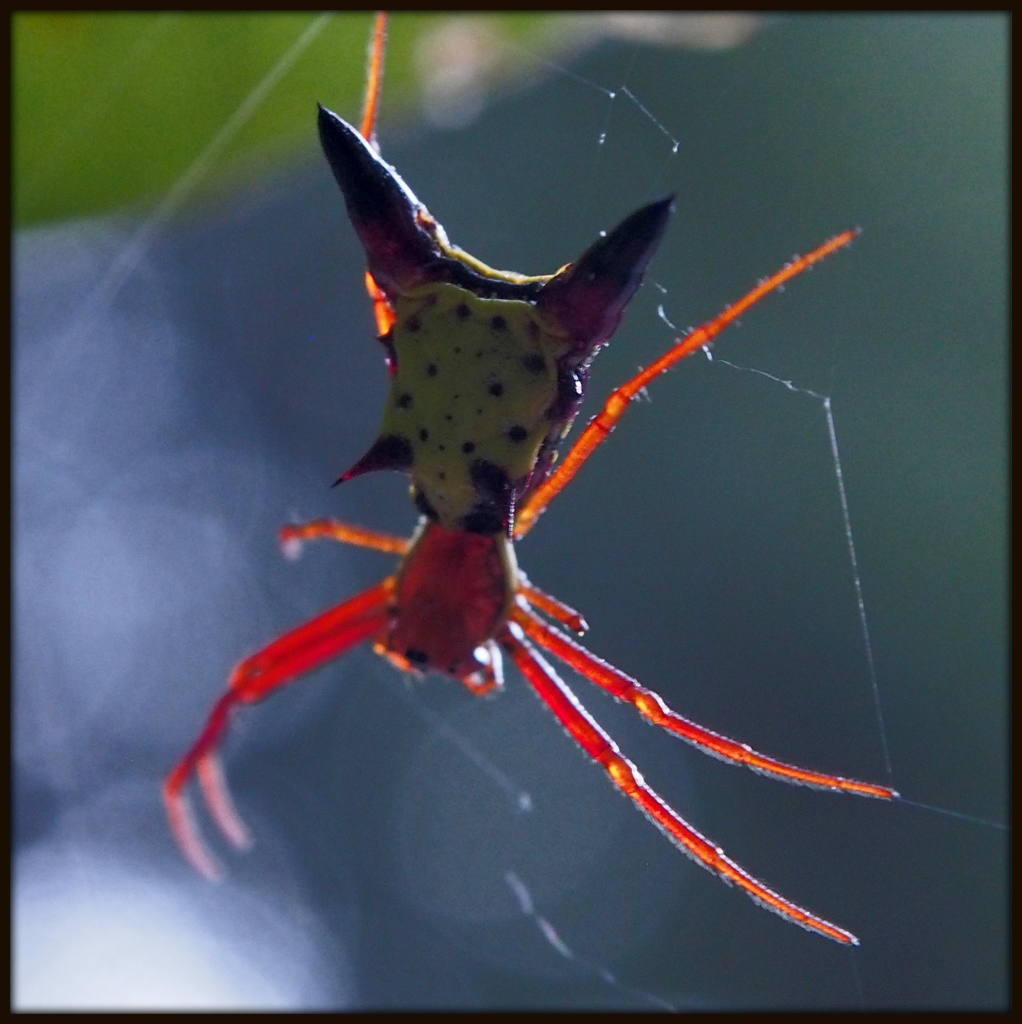

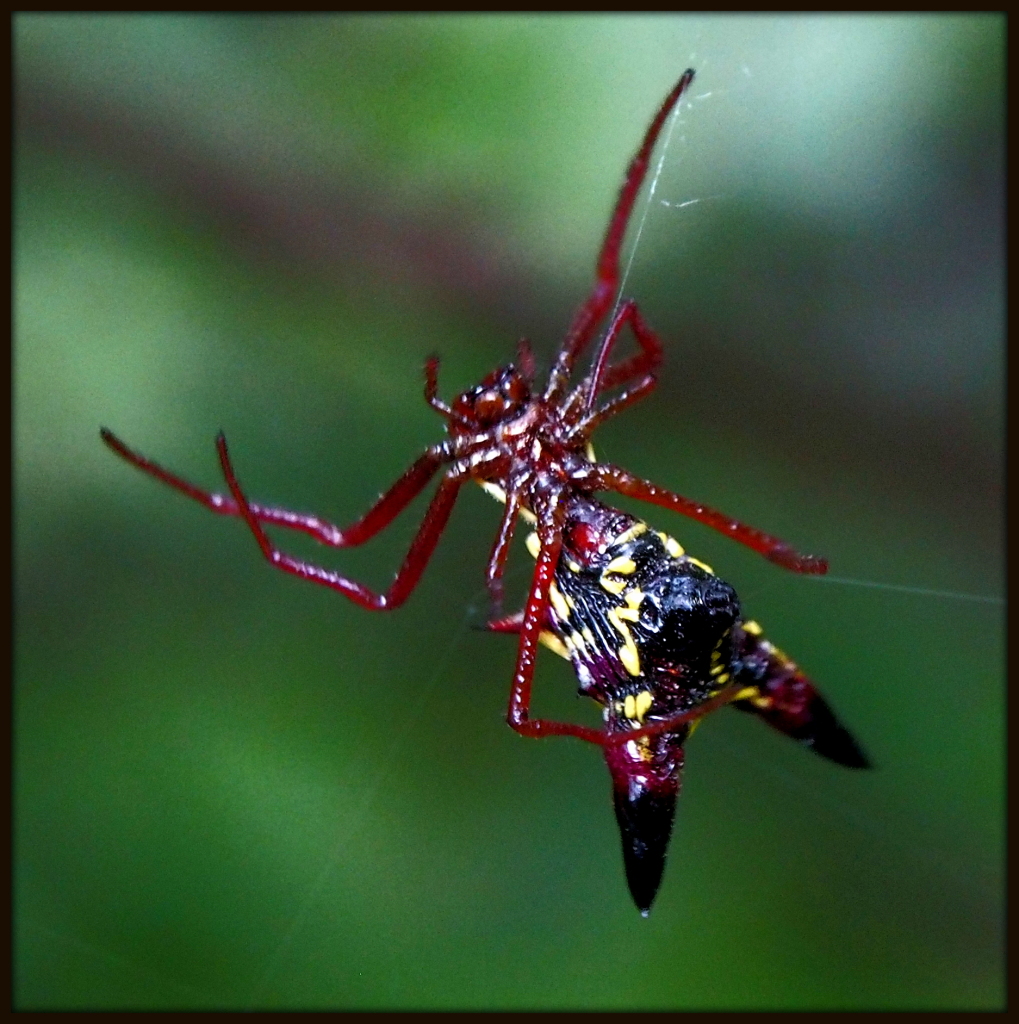

On my walk this afternoon, I saw a long-legged fly gathering nectar from just-opening blossoms of American Burnweed. Its body was an iridescent green and gold — a piece of flying jewelry.
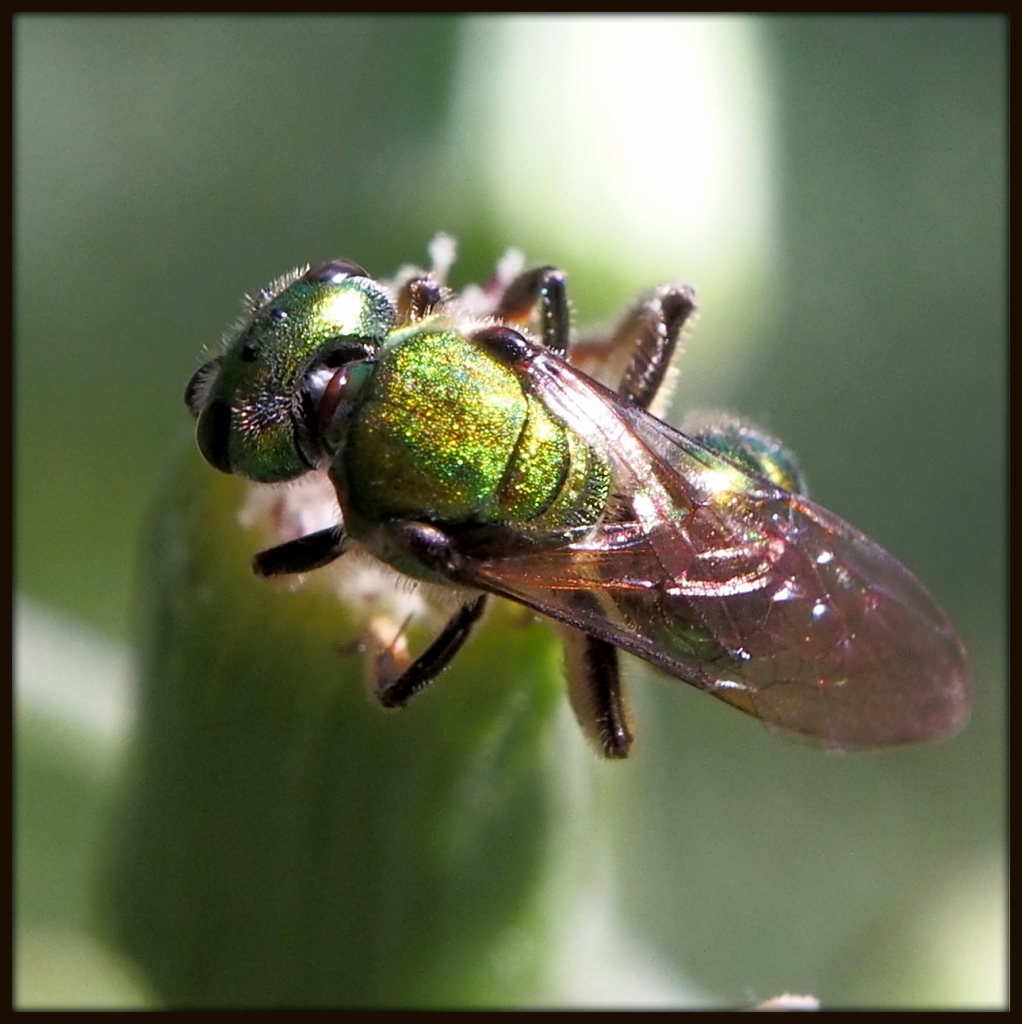

Back on June 29th (Day 210), I photographed the nymphal form of the Leaf-footed Bug (Acanthocephala terminalis). Today, I am delighted to announce, I encountered the same insect, only this time in its adult form, perched motionless on a leaf of American Dogwood (Cornus florida). Despite its imposing size and form, the Leaf-footed bug is a placid herbivore, content to sip vegetable juices.


On this afternoon’s walk, I encountered quite an array of invertebrates — insects and spiders — as I wandered from plant to plant along the edge of Piney Woods Church Road. Rather than highlight just one, I am offering this post as an exploration of the rich diversity of a modest country lane in the Georgia Piedmont. I saw, and photographed, even more than these on my wandering, in fact. Most of the critters below are new to my blog, except for the Rough Stink Bug, who easily makes up in charisma what it lacks in novelty.
The first critter, hiding on the underside of a leaf while dining on an aphid (I think) was a tiny jumping spider, only about a quarter-inch across. I am fairly confident it was a female Bronze Jumper (Eris militaris). I love this image with all of those eyes gazing out furtively from her hiding spot.

Across the road, on the unopened blossom of American Burnweed (Erechtites hieraciifolia), was a half-inch crab spider, most likely a female Goldenrod Crab Spider (Misumena vatia), frozen with front legs outstretched, waiting for a would-be pollinator or nectar thief to wander by.

Down the road a short way, I saw a Rough Stink Bug (Brochymena quadripustulata) repeatedly tapping its proboscis against an oak leaf. A red orb near its eye is probably a mite of some kind.

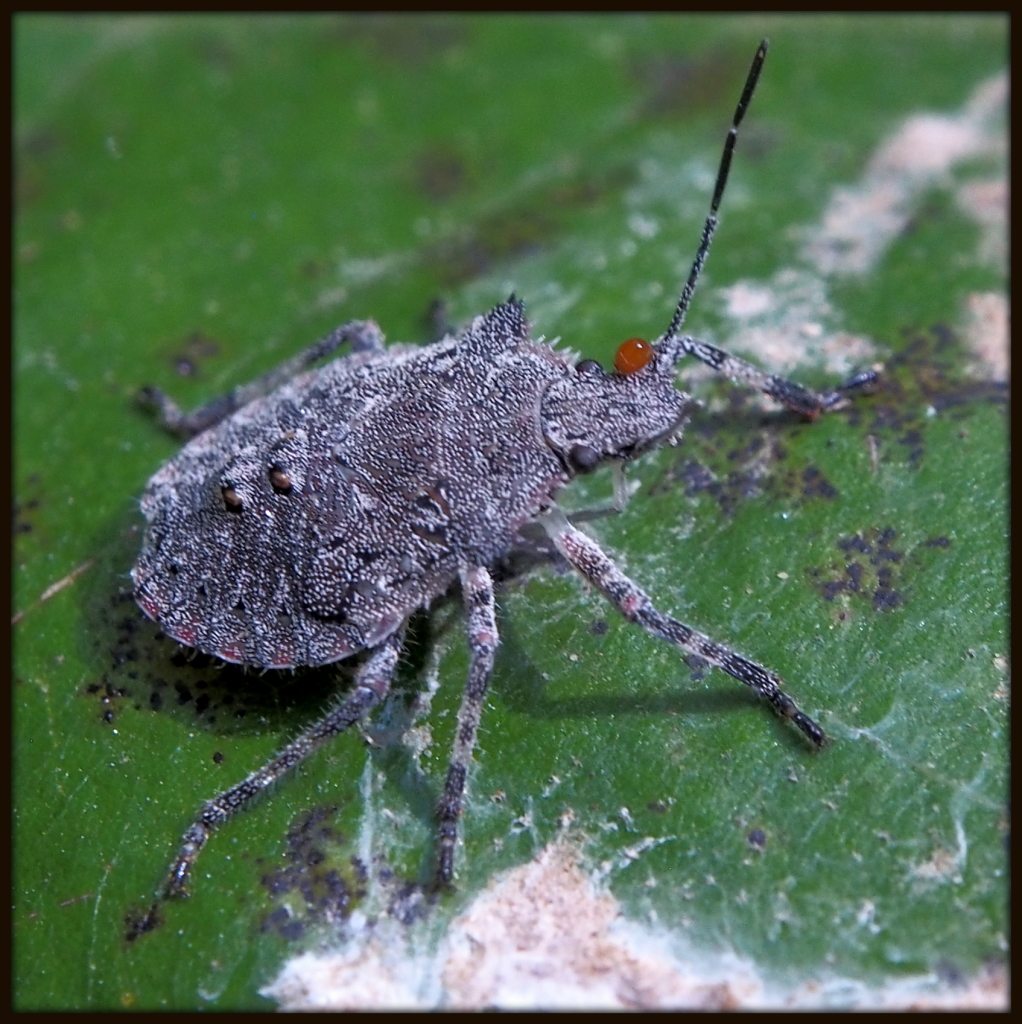

I continued until I arrived at the Mountain Mint, which amazingly enough still bore a few blossoms. Lurking nearby was a Carolina Mantid (Stagmomantis carolina), hanging upside-down and waiting for prey to amble near. With all these spiders and mantids out there, it must be rough to be an herbivorous insect….
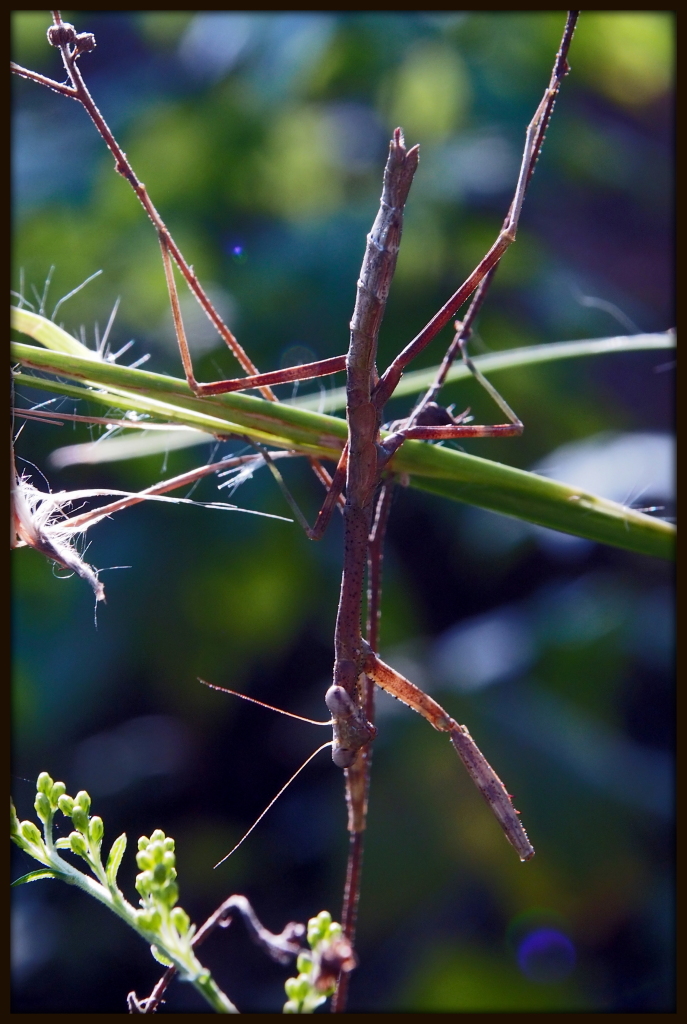

Close by, on the Mountain Mint blossoms, an inch-long wasp was feeding enthusiastically on nectar. She (most likely a female) had an abdomen with distinctive yellow and red markings. I am fairly certain she was a Digger Wasp (Scolia dubia), a solitary wasp that paralyzes June beetle grubs and lays eggs on them. The larvae feed on the grub, but adults dine on nectar instead. Unless disturbed, Digger Wasps will not sting humans.
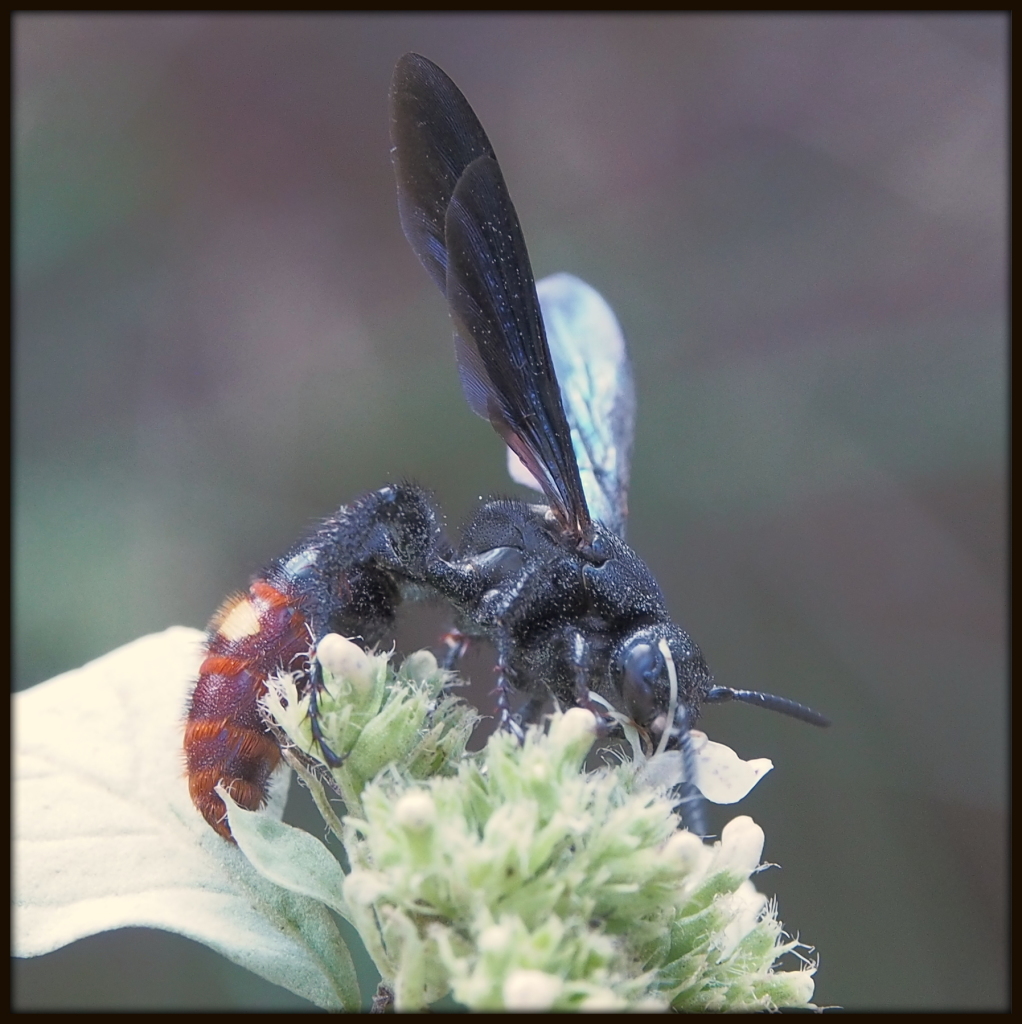
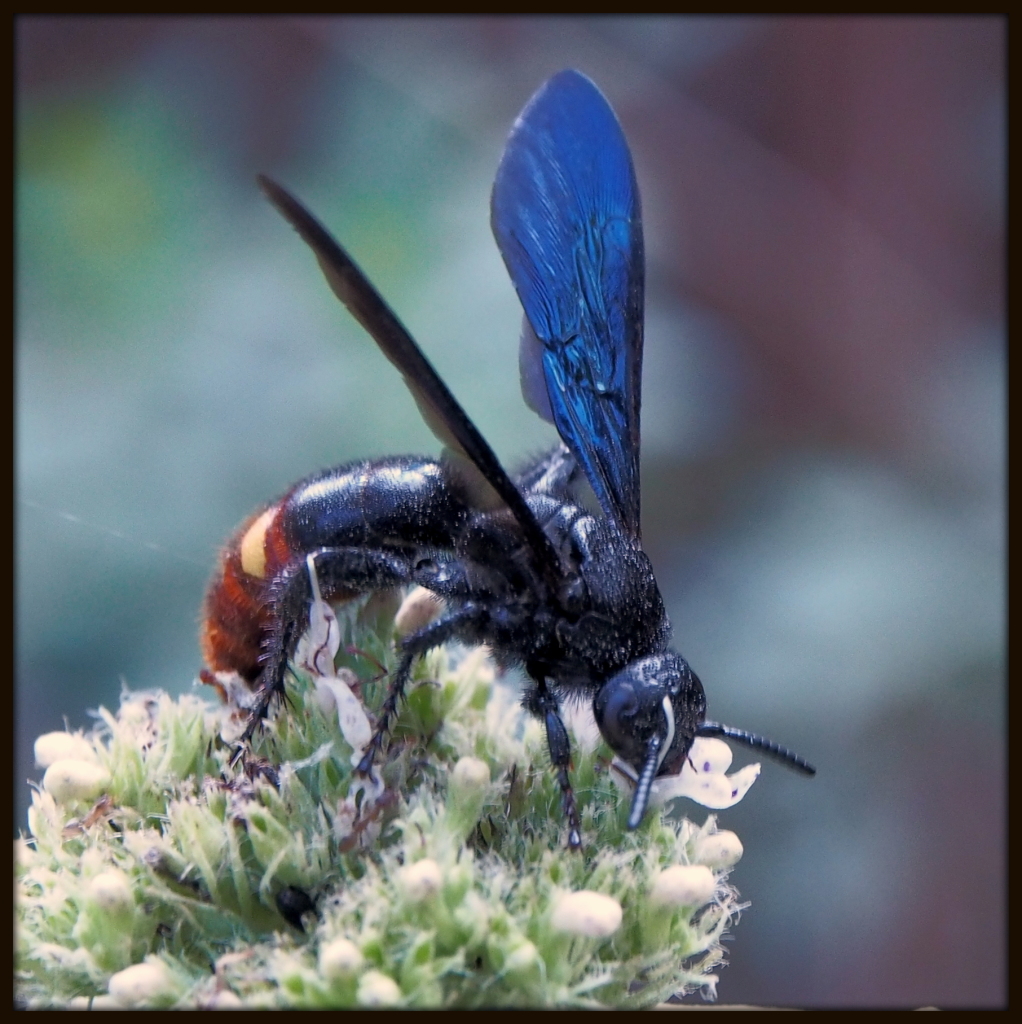

I noticed this pair of caterpillars taking on what looked like a ritual stance on a roadside weed during my walk today. I was reminded of Tai Chi, or perhaps Yoga. The two remained perfectly motionless while I took this photograph and several other ones. I am not sure why this particular pose is favored; perhaps it helps the caterpillars look more like twigs and less like dinner.
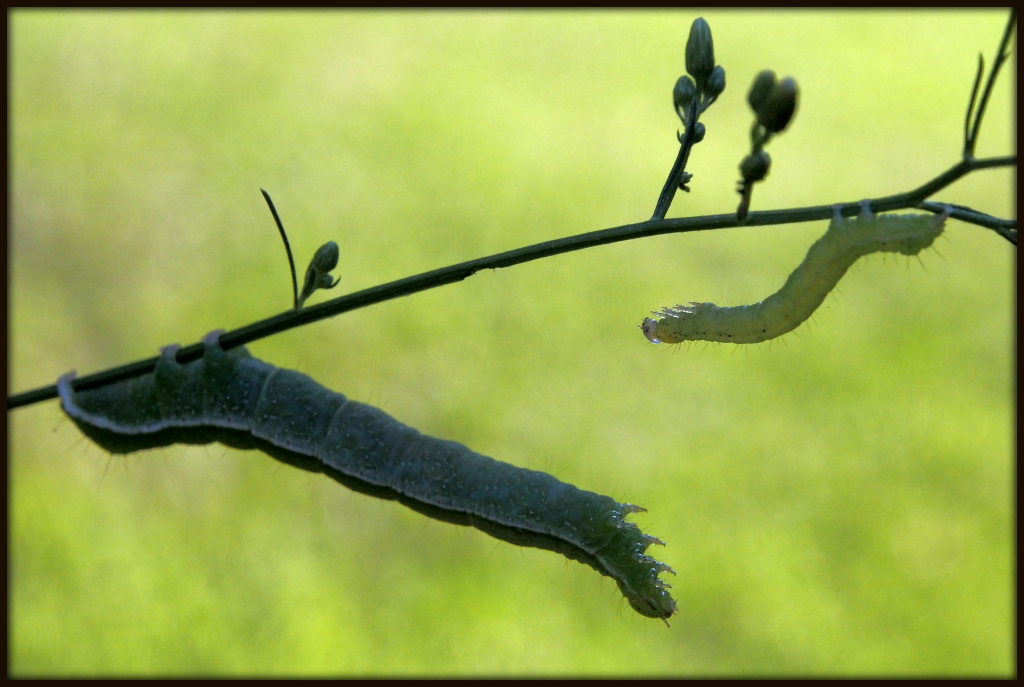
Today I encountered one of the most gaudy, clown-like of all the unusual insects I have seen along Piney Woods Church Road. When first I saw it among the branches of a roadside weed, it had its proboscis down, and looked like it was feeding on the juices of the plant. I assumed it was a harmless, brightly-colored herbivore of some kind. When I zoomed in on the digital image, though, I discovered that it was actually feeding on some sort of insect larva, possibly a tiny caterpillar. After inadvertently interrupting its breakfast, the insect began wandering the plant, and I embarked on a micro-safari, photographing it as it did so. After a few minutes of this, I continued on my way. Returning to the same weed twenty minutes later, I found it again an a different branch, and photographed it yet again.
I suspected that a bug so non-conventionally attired would be easy to find in an online search. Indeed, all it took was “bug black and white striped legs” to retrieve dozens of other images of it. The insect is almost certainly an Orange Assassin Bug nymph, Pselliopus barberi. In keeping with the account of this bug in the National Wildlife Federation’s Guide to Insects and Spiders of North America, it was occupying an open habitat near a woodland edge. “They are active from late spring through fall, when they hunt for insects during the day on shrubs and herbaceous undergrowth.” In the middle photo, the Orange Assassin Bug appears to be stalking a small aphid near the bottom of the image, having had its breakfast (top photo) so rudely interrupted by a nosy photographer.
